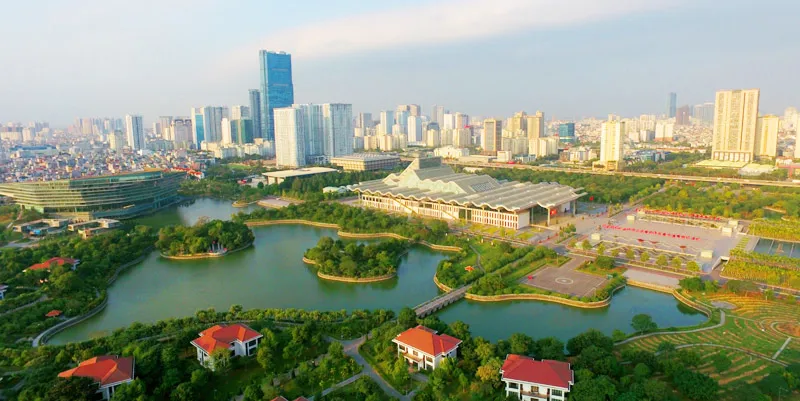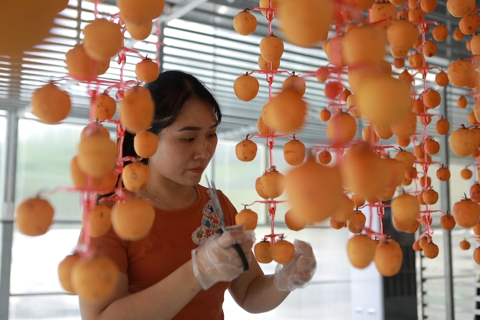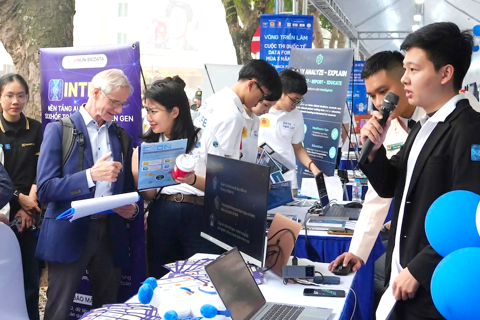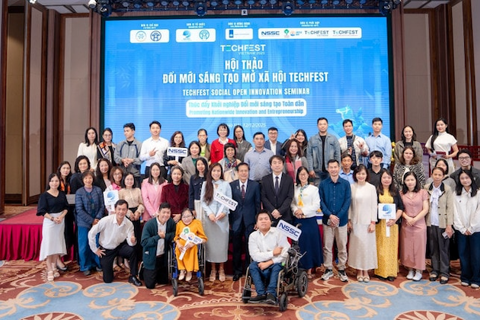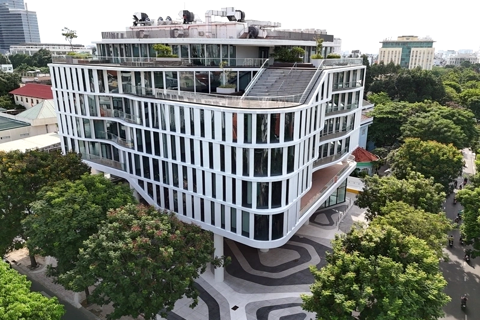ADB finances US$60 million to improve climate resilience of infrastructures in Vietnam
About 243,000 people, including 126,300 from ethnic minority groups, are expected to benefit from the project.
The Asian Development Bank (ADB) has approved a $60 million financing package to improve the climate resilience of transport and water supply infrastructure in Vietnam’s south-central coastal provinces of Binh Dinh and Quang Nam, especially in remote upland districts with large ethnic minority communities.
| Hanoi from above. Photo: Pham Hung |
The Climate Resilient Inclusive Infrastructure for Ethnic Minorities Project I will upgrade 121.8 kilometers of roads using climate-resilient design standards, construct 115 kilometers of water supply pipelines, and help provide reliable weather and climate data in a timely, cost-effective manner. About 243,000 people, including 126,300 from ethnic minority groups, are expected to benefit from the project.
“The project aims to improve the living conditions of ethnic minority communities in remote areas of Vietnam,” said ADB Programs Officer Hong Anh Nguyen. “It will better link remote rural production sites with markets and processing facilities for crops such as acacia and boost beneficiaries’ access to health, education, and market services. The project will also expand access to safe water supply and irrigation.”
The financing package includes $58 million in regular ADB loans and a $2 million grant from ADB’s High-Level Technology Fund. The grant will fund the supply and installation of data systems for climate risk management. In addition, the project will include $21.73 million in financing from the Government of Vietnam.
Vietnam’s economy grew 7.0% on average from 2016 to 2018, but it slowed to 2.9% in 2020 due to the Covid-19 pandemic. Significant gaps exist between the economically booming coastal communities and the interior upland areas with a high ethnic minority population. About 87% of the ethnic minority households in Binh Dinh and 55% in Quang Nam are poor or near-poor, compared with the provincial poverty rates of 5.5% and 10.3%, respectively.
These areas are challenged by low-quality, fragmented transport, and water resource infrastructure. Most of the ethnic minority communities are often isolated during the rainy season, cut off by flooded roads situated in hilly or mountainous terrain. Less than 60% of households within the project area have access to a reliable and safe water supply. Limited access to water and poor sanitation have led to the high incidence of waterborne diseases and poverty.
Vietnam faces a high risk of disasters and climate change. The country experiences an estimated annual average loss of $2.37 billion due to natural hazards, especially floods, with Binh Dinh and Quang Nam among the most affected areas.

